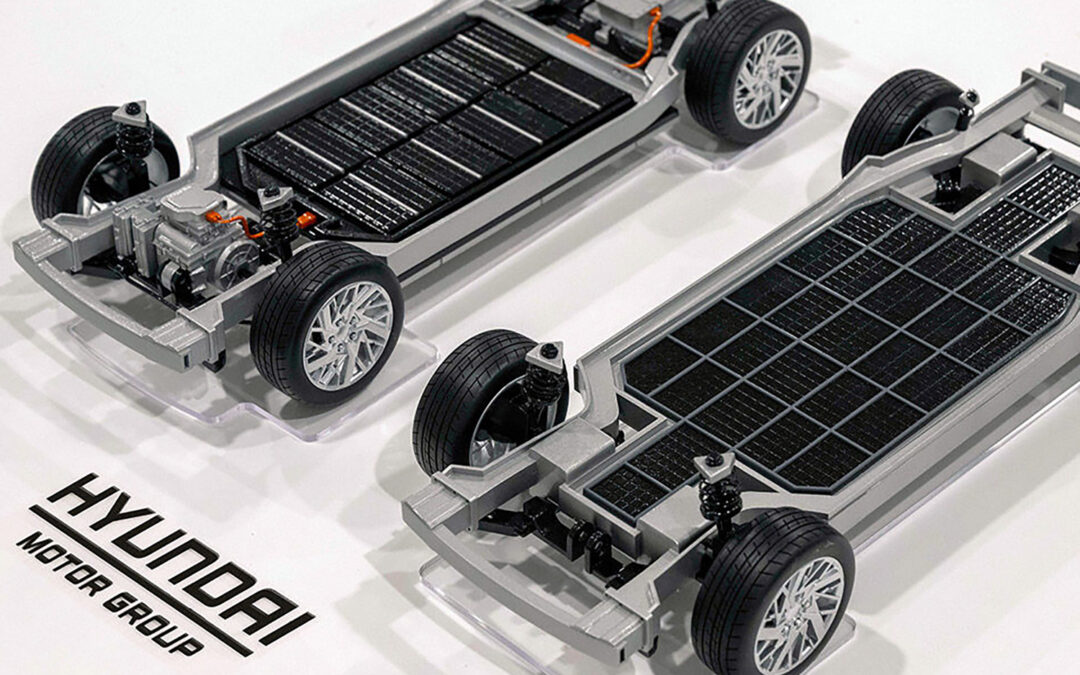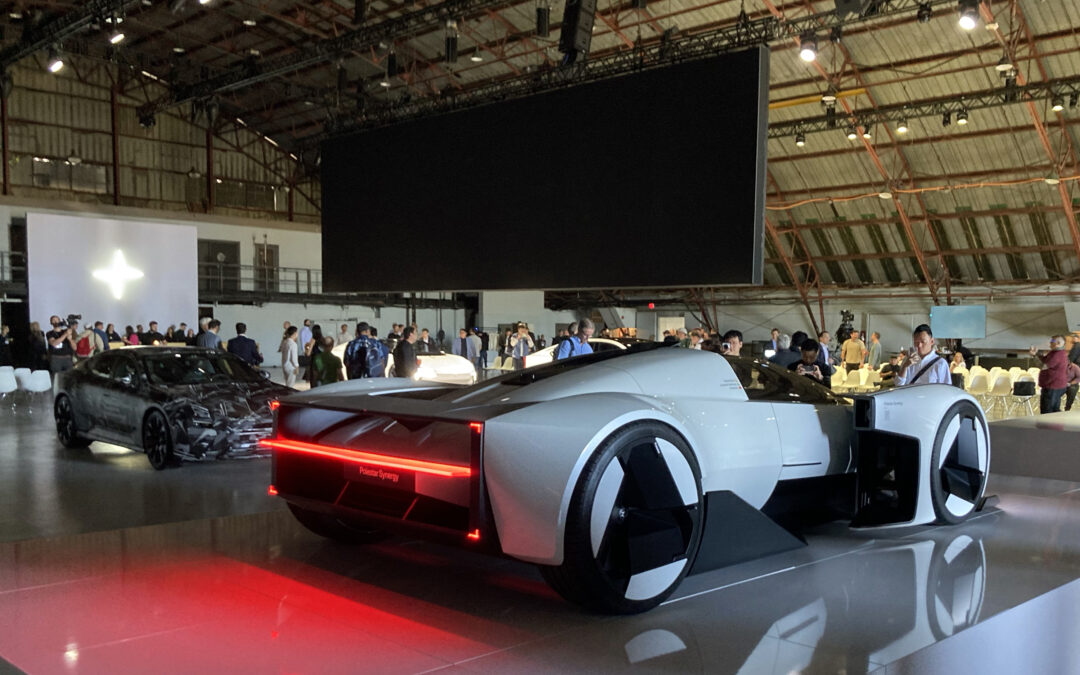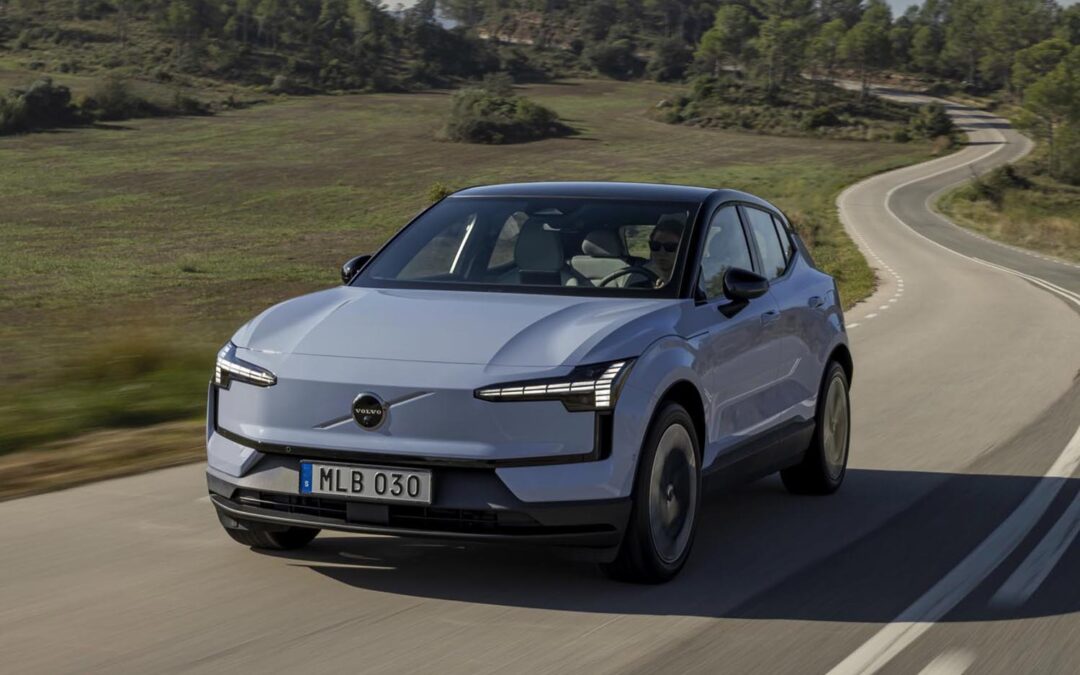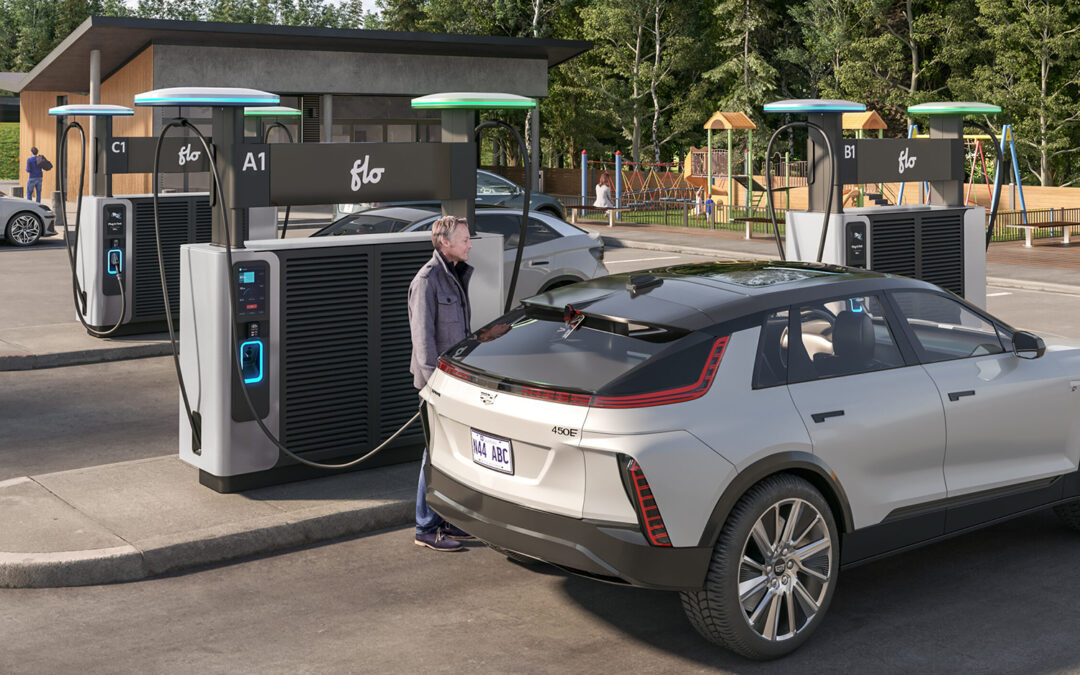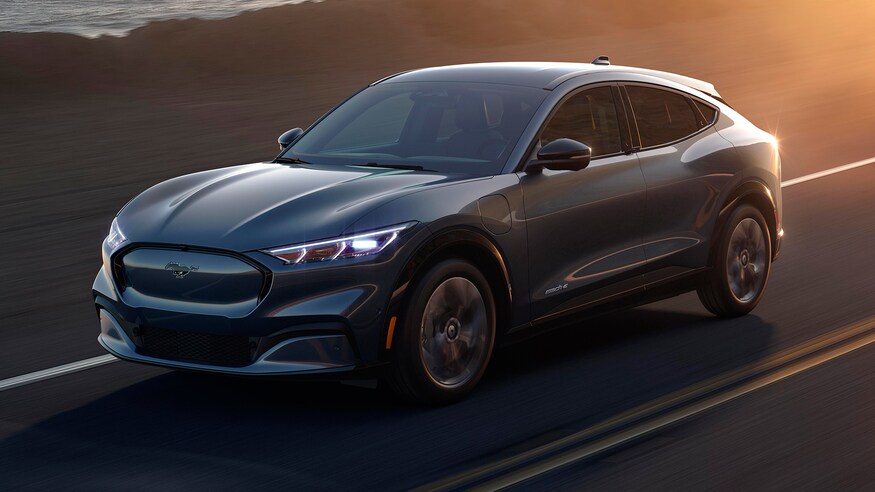At one time or another, you may have fantasized about hitting the open road, with nothing but good company – and perhaps, a good playlist or podcast – to act as a co-pilot as scenic stretches of highway fade into the rear-view mirror. For many of us, though, the idea of taking an electric vehicle for a long haul roadtrip may seem unrealistic, if not impossible. How far can an EV typically go on single charge? Are there enough charging stations situated around Canada to make that kind of trip possible? Is it inconvenient? These are the questions which, historically, may have weighed heavy on the minds of anyone considering a more environmentally-conscious take on the traditional road trip.
Fortunately, the infrastructure offered to EV drivers across Canada has evolved in a rapid and increasingly sophisticated manner over the last few years – and it shows no signs of slowing down. In fact, according to Harvey Soicher, a Vancouver native who had always dreamed of owning an electric car with his late wife, Mary Ann Heary, driving long distances in an EV has never been easier.
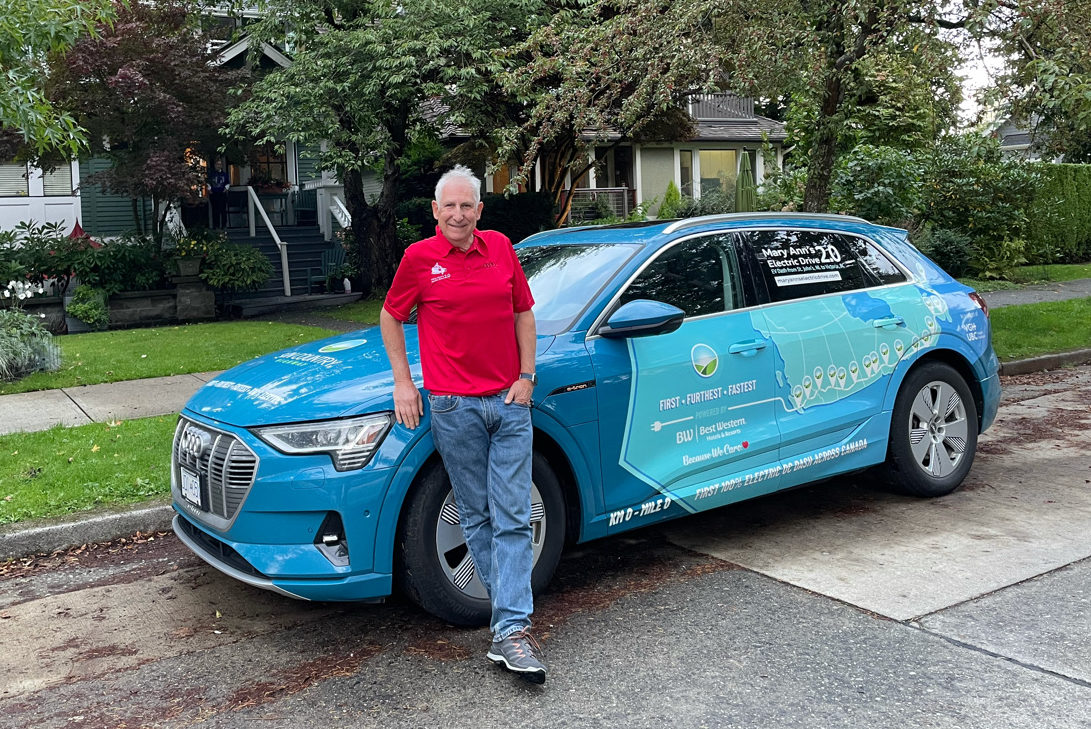
Harvey Soicher and his Audi e-tron quattro 55
In a touching tribute to his wife that also worked to raise money for Parkinson’s research and other brain disorders, Soicher embarked on a record-breaking cross-Canada trip this past July in his bright blue Audi e-tron quattro 55, an all-electric SUV that just debuted in Canada. The journey, which began in St. John’s and ended in Victoria, was dedicated to Mary Ann, and aptly called “Mary Ann’s Electric Drive”.
When considering the widespread adoption of EVs, the barrier to entry, Soicher shares, is often apprehension relating to changing driving habits. “As with anything that is new, it takes some time to get used to it, but then it becomes second nature, and the infrastructure offered today makes it quite easy. Just two years ago, Newfoundland didn’t have any high speed chargers. I had to make detours to plan where I could find the chargers, which often took six to 10 hours to charge my vehicle. But those days are gone. Just two years later, there are high-speed chargers offered all over Canada, and I could easily charge my car while stopping to grab coffee or lunch throughout my trip.”
‘As with anything new, it takes some time to get used to it, but then it becomes second nature’
In fact, at this publication date, there are 6,007 EV charging stations across Canada, including 5,255 Level 2 EV charging stations and 964 DC fast EV charging stations. Fortunately for current and prospective EV drivers, this infrastructure is rapidly expanding across the country. In October, Hydro Ottawa announced that it will soon receive support to help distribute funding to eligible applicants for EV charging stations within the city of Ottawa boundaries. Moreover, the Thunder Bay Community Economic Development Commission (CEDC) is currently taking applications for its $1-million Plug in Thunder Bay program, in an effort to address the traditional lack of charging and refuelling stations in Canada. Similar to Tesla’s Supercharger network, Porsche is also looking to complement the EV infrastructure offered across Canada with the Porsche Destination Charging network. The network will include fast DC chargers being installed at Porsche dealerships and at existing Electrify Canada (EC) sites, which will support quick charging on major highways as well as in major metros for all EV drivers. There are currently seven active locations in Canada, with five additional sites under construction and plans for national expansion. And by the time you read this, there likely will have been announcements from other organizations for further expansion.
To plan their route for long distance trips, drivers can utilize resources like The Charge’s Charging Hub, which uses maps from National Resources Canada, or others such as the Electric Vehicle Charging Station Map, ChargeHub, PlugShare, and more.
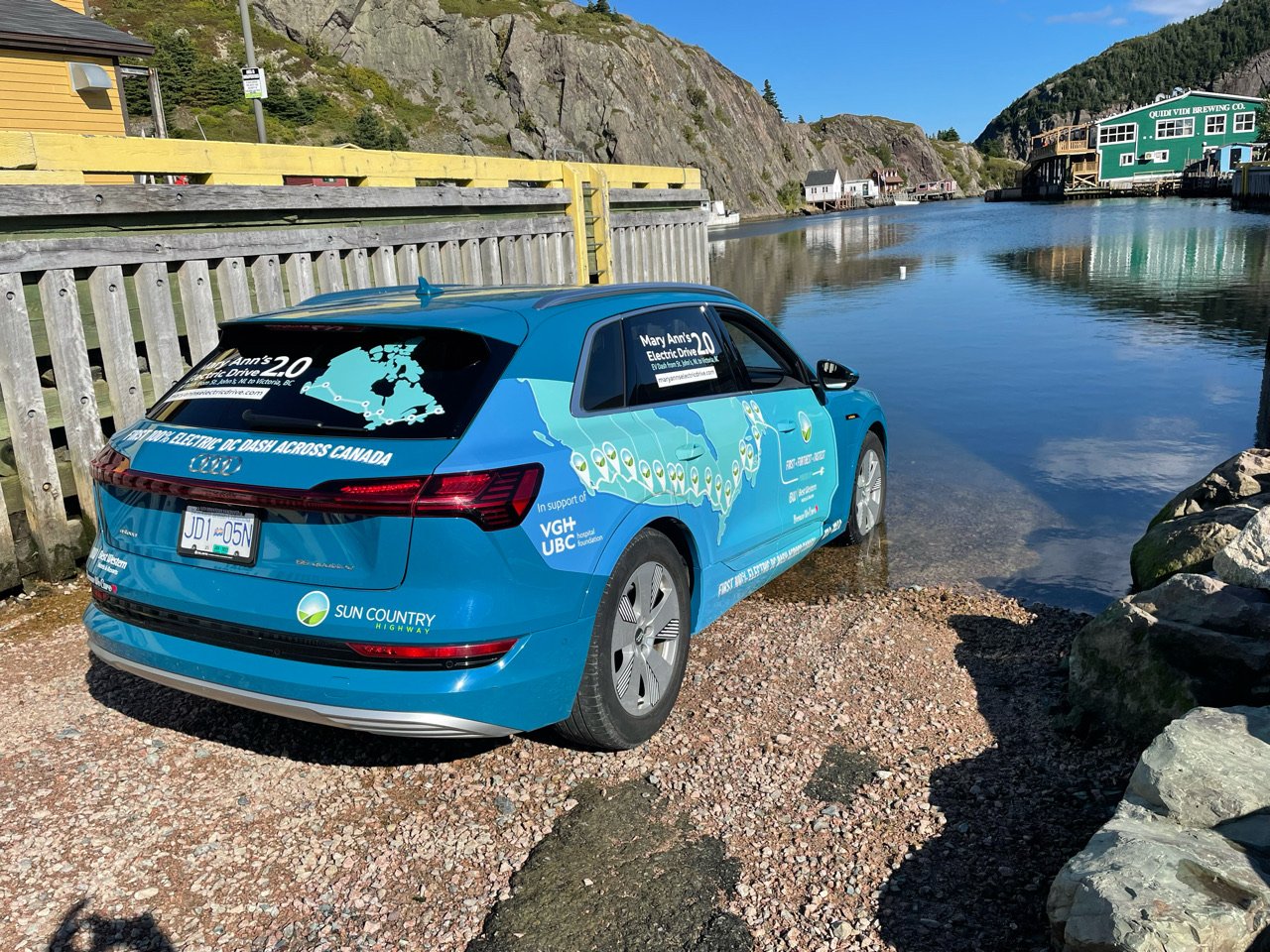
Mary-Anne’s Electric Drive started with a dip of the tires in the Atlantic Ocean in St. John’s.
According to Soicher, his recent trip with co-pilot Ken Rathwell was about making it from St. John’s to Victoria with little to no inconvenience, and doing it quickly – in four days, 18 hours and 25 minutes, to be precise.”I can’t stress this enough, the high-speed charging infrastructure is 20-times better than it was two years ago,” shares Soicher. “It’s incredibly convenient and the cost is significantly lower, even if you have to pay for your electricity. A number of automakers offer free charging incentives for new EV drivers, and my car can get between 350 to 400 kilometres, oftentimes on a $12 charge.” For this 11,000-km trip, Soicher revealed that the total electricity bill was $238.
One key to adding convenience, even with shorter trips, is having a charging system at home. With it, Soicher says you’ll have a full battery every morning. “It is incredibly convenient to charge your EV at home overnight, and you could go a whole week without even needing to recharge when driving locally,” he adds. It also means that your long-distance trip will start out with your car’s full range, without the need to stop for a few hours.
Ian Pavelko, the co-host of Tesla Owners Online YouTube channel, started his journey into the EV space back in March of 2016 when he camped out in front of the Tesla Montreal store to be the first in Canada to reserve a Model 3 when it first debuted.
When Tesla completed their first stage of the Supercharger network in Canada at the end of 2019, Pavelko and his podcast co-host, Trevor Page, saw the perfect opportunity to really smash the myth that long distance travel by EV, particularly in the cold of Canadian winters, was difficult, impractical, and time-consuming. To accomplish this, Pavelko and Page set the record for a straight run from Vancouver to Halifax, planning their route according to Tesla’s expansive charging network, which currently offers over 100 chargers across Canada.
“Our goal was to cover the 6,131 km distance in three days, at temps as low as -20C,” shares Pavelko. “Our final time was approximately 73 hours and 27 minutes, with an average speed of 83.5 km/h including charge stops. As far as we know, that is an EV world record for that distance, and helps put to bed any arguments that long distance EV travel is problematic in our fair land.” For reference, making the trip from Vancouver to Halifax in any vehicle takes around 57 hours of pure driving time, without taking into account any kind of stops.
For this trip, Pavelko and Page were able to rely on Tesla’s expansive network of 113 Supercharger stations, which are strategically situated close together and near amenities such as hotels or restaurants, to ensure convenience. Even further, the car can utilize the Tesla network to find the nearest station and automatically map a route. Pavelko notes that all they needed was a 50 per cent charge to get to the next station, where they would run in to grab a coffee while the car charged.
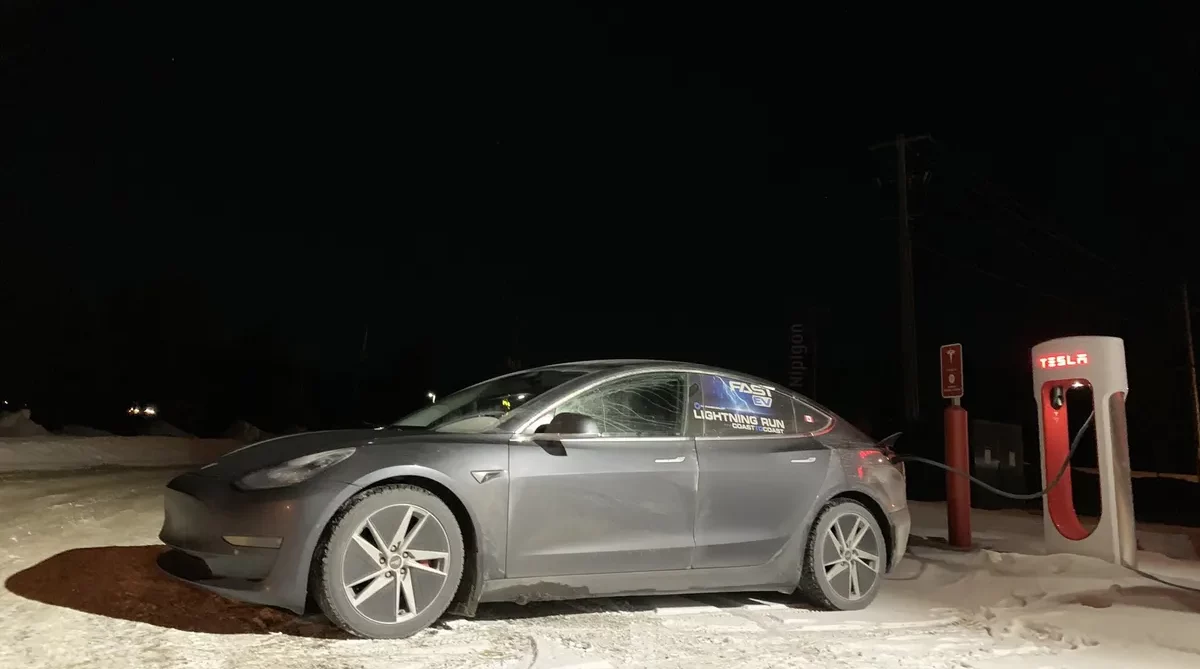
Ian Pavelko’s Tesla Model 3 gets a frosty recharge along his trans-Canada drive.
If the idea of frequent pit-stops deters you, keep in mind that this is a common part of the road trip experience. “Even if you have a longer range in a gas-powered vehicle, people will usually stop for lunch or dinner, a bathroom break or even just to stretch their legs,” Pavelko points out.
“Right now, the growth in the Canadian EV infrastructure is incredible,” adds Soicher. “I feel confident that most people will switch their vehicle to an electric vehicle within the next five years. Electric is absolutely the future.”
Admittedly, while the infrastructure across Canada has grown exponentially, there are still some underserved areas around the country, such as the far North, that may make some trips more difficult or even impossible. But whether it’s a cross-Canada trip like Pavelko’s or Soicher’s, or a shorter one, such as Toronto to Montreal or Edmonton to Whistler, the so-called ‘Electric Highway’ has opened up considerably for EV drivers, not just in Canada but all across North America. Start planning your route now.
You can read more about Soicher’s cross-country trips and view his route planner and charging log here, or check out Page’s YouTube channel and video blogs here.


